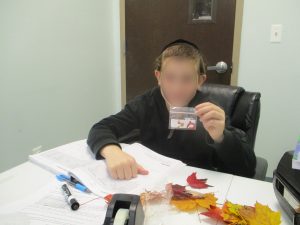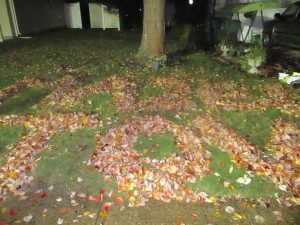No Child Shall Ever Be “Leafed” Behind!
Rabbi Hillel L. Yarmove ©
If there’s one thing I know, it really ought to be English grammar. Years of training and decades of hands-on experience have prepared me for the task of coming to grips with the complexities of the particularly nettlesome problems posed by lingua franca of the United States.
Such being the case, what’s all this about “no child should ever be ‘leafed’ behind”? How can I, a reasonably respectable educator for almost half a century, have chosen the word “leafed” instead of the proper verb form “left”? What horrible grammar! Or do I have something slyly provocative up my sleeve?
But of course I do!
By the time you read this column, the autumn leaves will themselves be but a fond memory of nature’s final gasp of vivid color. So perhaps this column, appearing as it does in the December issue of TJE, is already out of date, since my use of the term “leaved” in the title actually refers to the now-defunct leaves of early-to-mid-autumn. Notwithstanding, I have learned that a great many lessons can be learned from what appears, at first sight, to have become the seemingly rejected cast-offs of nature.

First off, the fact that the almost uniformly green leaves of spring can undergo such striking changes in their “old age”—a change so stupendous as to underscore the uniqueness of every single “veteran” leaf—is a subtle reminder to many of us who have reached the autumn of our lives that a person can continue to reach his or her potential even as the years pass with undreamt-of alacrity.
As a general rule, spring and summer leaves owe their verdant quality (greenness) to the miraculous chlorophyll which Hashem has inserted into the chloroplasts. This amazing substance then converts carbon dioxide and water into sugar through a process known as photosynthesis. But note what happens as autumn makes its presence known in our region: “[I]n fall, because of changes in the length of daylight and changes in temperature, the leaves stop their food-making process. The chlorophyll breaks down, the green color disappears, and the yellow to orange colors [of pigments known as xanthophyll and carotene—my comment!] become visible and give the leaves part of their fall splendor. At the same time, other chemical changes may occur, which form additional colors through the development of red anthocyanin pigments. Some mixtures give rise to the reddish and purplish fall colors of trees such as dogwoods and sumacs, while others give the sugar maple its brilliant orange. . . . . Temperature, light, and water supply have an influence on the degree and the duration of fall color” (Carl L. Palm, Jr., of ESF—New York’s Global Environmental College).

So what has this divinely orchestrated tapestry of color have to do with not “leaving” any child behind?
Why, everything in the world!
Truth be told, the Yamim Tovim constitute an undeniably difficult “act” to follow—especially when the prospects of a cold, dreary, and otherwise bleak winter loom on the horizon. But if we utilize the marvelous materials at hand—the autumn leaves themselves—to emphasize to our children, our students, and, yes, even to ourselves that Hashem’s amazing providence is visible during each season, we shall certainly find an eager and receptive audience. As evidence of this, I have included “leaf” signs which I produced from leaves which my Indiana einiklach and I collected in late October. And look: two of our students are proudly holding their initials aloft—initials sculpted from fallen leaves which once adorned some of New Jersey’s sturdy trees. (Oh yes, that flower bookmark I myself crafted from a “nature-supply” kit!)

The moral: Don’t put those leaves behind you; put them out right in front!
Indeed, there are so much supercharged natural phenomena evident in our ambiance which we take for granted that I think it high time that we call it to our readers’ attention—and we haven’t even mentioned the fascinating rocks and stones that lie abandoned on our paths every day and are ours just for the taking!).
What a way to celebrate being alive—not just during the summer, but all year round!
Gevaldig!
>>>>>>>>>>>>>>>>>>>>>>>>>>>>>>>>>>>>>>>>>>>>
Questions or comments? I may be reached at hillyarm@yeshivanet.com.Stay warm—and teach warmly, dear readers!
You must be logged in to post a comment.